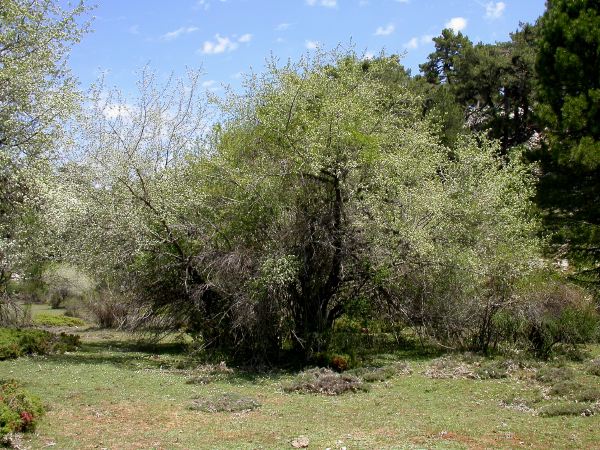García, C., P. Jordano and J.A. Godoy. 2009. Maternal genetic correlations in the seed rain: effects of frugivore activity in heterogeneous landscapes. Journal of Ecology 97: 1424-1435.
 1.
A frugivore-generated seed rain combines dispersed propagules from source
trees located all over the landscape. By selecting deposition sites, frugivorous
vertebrates set the maternal genetic correlations in the seed rain, i.e. how
maternal progenies become distributed over the landscape relative to the
source trees and other conspecifics. This aspect, however, remains virtually
unexplored despite its central effect on the demographic and genetic structure
in plant populations.
1.
A frugivore-generated seed rain combines dispersed propagules from source
trees located all over the landscape. By selecting deposition sites, frugivorous
vertebrates set the maternal genetic correlations in the seed rain, i.e. how
maternal progenies become distributed over the landscape relative to the
source trees and other conspecifics. This aspect, however, remains virtually
unexplored despite its central effect on the demographic and genetic structure
in plant populations.
2. We examined three components of maternal
genetic correlations in the seed rain: the number of distinct contributing
maternal trees (maternal richness), the genetic relatedness among contributing
trees (maternal relatedness) and the probability that two seeds drawn from
the same seed trap come from the same maternal tree (correlated maternity).
3. We studied the maternal genetic correlations in a vertebrate-generated
seed rain of a Prunus mahaleb population
located in a heterogeneous landscape (ca. 25 ha). Based on the multilocus
genotypes provided by microsatellite markers, we identified the source
tree of dispersed seeds sampled in seed traps and distributed among six
microhabitat types.
4. Seed traps showed a spatial aggregation
of maternally related seeds that varied among microhabitats in relation
to the frugivore foraging preferences, resulting in variable maternal correlations
across the landscape. We found: i) seed traps with high maternal
richness and low genetic relatedness in sites dominated by high shrubs,
frequently visited by most frugivore species; ii) seed traps with
low maternal richness, high relatedness and increased correlated maternity
values resulting from recurrent dispersal from few isolated source trees
to sites dominated by non-fleshy fruited species; and iii) seed-traps
under pine trees with high maternal richness and relatedness (but low correlated
maternity) due to long-distance dispersal events from several source trees
growing closely to each other.
5. Synthesis. Maternal progenies
became distributed non-randomly over the landscape, where trees with similar
maternal neighbourhoods tended to disperse their progeny to similar microhabitats.
This resulted in genetic limitation, i.e. the failure of maternal
trees to reach all microhabitats, as well as the failure of the microhabitats
to cast all maternal progenies. Both the genetic limitation and the spatial
aggregation of maternal progenies, driven by frugivore activity, might
pervasively determine recruitment and spatial genetic patterns in heterogeneous
populations.
| Photo: Prunus mahaleb tree in flower. |